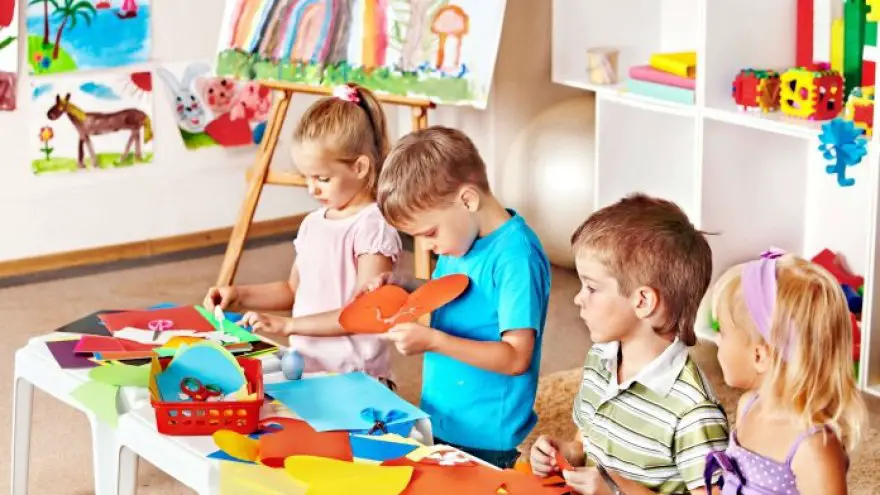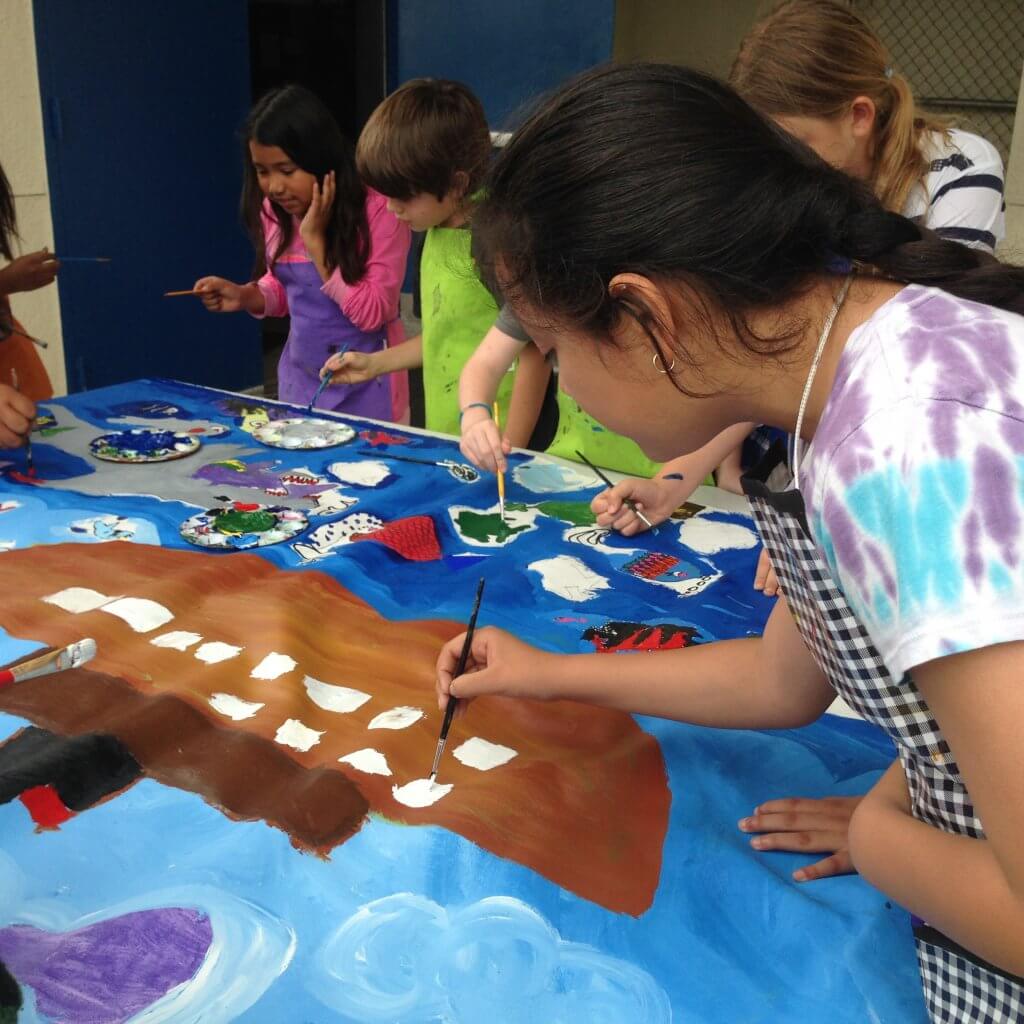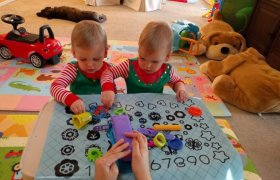The Valuable Lessons Coloring Can Help Teach to Children

My coffee table is not just a coffee table; most days it’s an art studio. Crayons, markers, colored pencils, playdough, and even a pottery wheel from time to time hold permanent positions in the center of our living room.
We have tried almost every conceivable way to organize the multitude of supplies and materials with varying degrees of success. Constant threats of drying out markers and turning playdough to rock seem to hold little to no sway on our 5-year-old when he gets into his art zone.
With 2 kids, 2 dogs, and a busy schedule, we try and keep our house constantly tidied up, knowing that any slack in our relentless struggle will only result in a complete mess of a magnitude far beyond what either of our schedules would allow.
So why would we permit this nucleus of chaos to exist in such a prime location of our home? Because we as parents feel that almost nothing our child chooses to do in his day carries as much weight as art does when it comes to growth and development. Sure, he eats (most of) the things that he should eat, he brushes his teeth, he gets into bed when he needs to, but time devoted to art is different.
When my youngest child creates things with his art, whether he uses paint, crayons, or any other medium, he does what his vocabulary and cognitive abilities won’t allow just yet; he expresses himself and explores new limits. Like many children, Tristan uses vibrant colors and blank canvases (or rather, pages) to bridge the communicative gaps left by his youthful age.
From simple childhood curiosity to expressing emotion, most parents either know or will eventually realize that art can tell you a lot about your child; if you cultivate it and learn to recognize it. But there are many more aspects to your child’s development that come from regular exposure to art as well, and you may find that pound for pound, few things will give you as much bang for your buck as art does.
Patience
The first lesson learned in art is that things don’t always turn out as expected in the beginning. If it were possible to prove, I am willing to bet that if you were to go back to the first years of either Pablo Picasso or Leonardo De Vinci’s lives, you’d find stick figures.

The minds and hands that produced some of the most widely recognized and influential art works in human history originally likely produced crude representations of the world around the individual artists as they saw it. When your child attempts to create a visual reflection of his experiences or environment, even he or she may not recognize the product as what it’s supposed to be.
Perhaps their hands moved faster than their mind, or they lacked the finesse and attention to detail required, but passable art comes slowly for most kids. The necessity to recognize and understand their own limitations will cultivate your child’s patience. As the parent, your role in this is to not only help them understand this, but to also show them how to apply those patience.
If they are moving to fast with the paint brush, show them how slowing down will keep the paint where they want it to be and away from the spots it shouldn’t. Most kids are more concerned with the end result than they are the process, but this lesson of delayed gratification is a lesson that they will apply for many things in life.
Self-Esteem
Young children thrive on positive reinforcement and recognition, especially from their parents. When your child produces his or her art work, what they will seek out from you is your approval. Share with them what specifically you like about their coloring and ask them questions that will teach them to explain it.

By doing this your child will grow in confidence not only in their art, but other aspects of their life as well. Your child will begin to develop the connection between their effort in the things that they do or create with your approval. Irrespective of what age the artist is, a large component of art is making yourself vulnerable. As your young one finds safety and approval in this vulnerability, they may become emboldened to try new things that seem difficult at first as well.
This doesn’t necessarily mean that you should lie to your child about their work and say that one day they will be a world-famous artist, simply search for and point out certain aspects of it that you like or that they did very well on. This could be something as simple as how you enjoy the fact that they made each family member the correct height in respect to the other family members, or how they did a wonderful job picking a certain color for a car they made Your child is trying to express something with what they drew or painted and by identifying and highlighting it, you will build their confidence.
Expression
Children develop emotions faster than they develop healthy and effective ways to express those emotions. By giving your child a creative outlet for their feelings you can help them reduce the stress and frustration involved with communication gaps.
Let’s say you told your child to draw whatever they felt like drawing and they colored a picture of them in a shopping cart; not what you were expecting. Talk with him or her about why they chose that particular thing to draw or color. Is shopping with mom or dad something they enjoy, or do they feel as though all they ever do is go to the grocery store?
Sometimes your child may not even be able to properly articulate why they feel a certain way, but they may find coloring and drawing to be a way to create on paper what they feel inside. Coloring is also a wonderful way to discover what things have the most influence on your child. The little chores or errands that you find droll and tedious may be the times that they like the most simply because they get to spend more time with you.
Motor Skills
Because there are numerous aspects and mediums to art, your child has to approach each in unique ways. Holding a crayon is different than holding a paint brush, and each require their own motor skills to master in order to become proficient.

Whether your child is trying carefully to stay between the lines while coloring with crayons or they are doing their best to get straight walls for a house they’re doodling, their proficiency will only improve as their ability to manipulate whatever they are using to draw or color improves.
As they grow older and learn to write and do other tasks, the skills they developed while learning to color and draw will be put to further use. Its natural for young children to get frustrated at their lack of dexterity and ability at this stage. Just reassure them that they will get better and focus on the things they are doing well. You can even go back over older pieces of art that they did and show them the improvements they have made over time.
Problem Solving
Any original creation requires a degree of imagination to bring it to life. Whether trying to capture a scene playing out before them or recollecting a favorite memory, your child is eventually going to have to approach a blank page not knowing where to begin or how best to proceed.
It may seem insignificant as far as problems or puzzles go from an adult perspective, but remember that children’s worlds are limited in scope; even when it comes to overcoming obstacles. Which colors go with which objects, what do birds look like up close, and other challenges all give your child an opportunity to bridge the connection between their mind’s eye and their art. Like other things, there can come some frustration and stress with their ability to work these problems out, but communicate to them that it is all a part of a very normal process and offer your support and encouragement.
Rather than trying to go from stick figure to the Mona Lisa overnight, identify one or two things that your child can work on improving as they color. That way they can tackle the obstacles a little at a time rather than become discouraged by having to memorize and apply a dozen different things. Whether how to hold the crayon to how hard to push down on the paper, give them one small adjustment to try each time and you’ll keep them enthused and progressing at the same time.
Creativity
One of the first and best outlets for children to explore their creative side is through coloring. Beyond just learning the basic hues and combinations, coloring lets them duplicate and alter the world as they see it onto paper. For this reason, I’m a huge fan of freestyle coloring.
Coloring books have their place and are wonderful for teaching children how to stay between lines, but when it comes to individual creativity, a blank page and a handful of crayons will let your child explore his or her imagination. By letting them freely create what they want rather than just filling in someone else’s pictures with color, you will nurture their creative side and allow them to express themselves through art.
When it comes to relieving stress and frustrations in a world where they have very little control, this creative outlet can be a straightforward way to allow them the freedom of imagination that all children need.
Focus

Applying focus in any task is fundamental for growth and improvement. You want your child to discover that by harnessing their attention onto what they are doing they will not only get a better result, but also see rapid and consistent improvement in quality over time. Many parents may not realize that the skills needed for learning complex math formulas or comprehensive reading problems are the same skills rooted in early childhood art and coloring. Most kids possess notoriously short attention spans that can have them bouncing from one activity to the next. When they’re coloring they learn to apply themselves to the task at hand.
As the parent, encourage your child to take their time and focus on their art work to get their best result. Whether your children are on electronics a lot or they simply like to do a wide variety of things in any given day, try to set aside time in the day that is reserved just for coloring. It’s not only a terrific way to unwind for the day but also allows them to focus on their creative work. As an additional bonus, you can make an artistic space in your home that is devoted to your child’s art time. By giving them a creative corner you may find that they are more focused on their work and have fewer distractions.
While not all children are going to grow up to be the next world-famous artist with their work displayed in the finest museums, each child is going to benefit from their time spent coloring and drawing. Somewhere along the way to adulthood many of them will put the crayons and colored pencils away, never to be touched again until perhaps some day when they have their own children.
Luckily, the benefits will long outlast the thrill, and the skills learned are transferable to many other things that they will do. So, the next time your little one wants to cover the coffee table with a hundred loose crayons and all the printer paper that you just bought, try and look past the mess and see the big picture; he or she is doing much more than just coloring.






